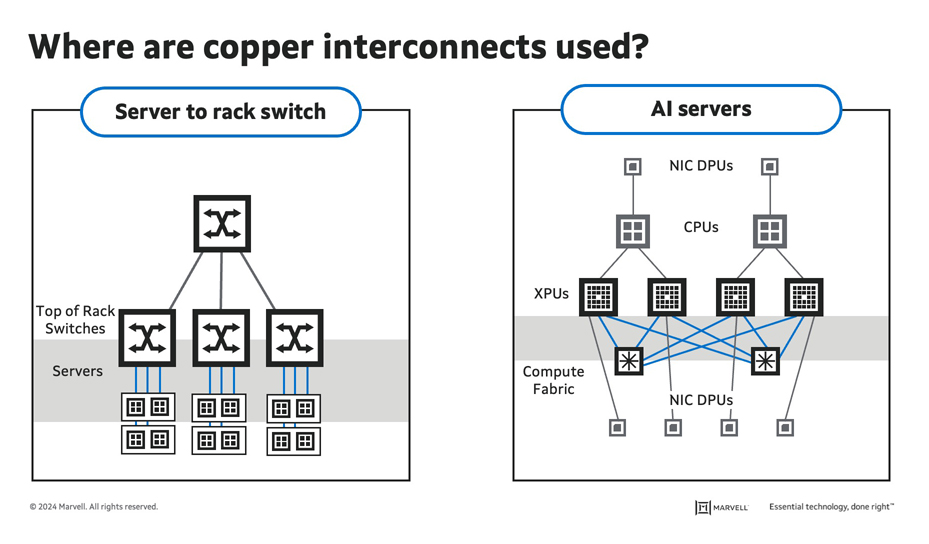

By Michael Kanellos, Head of Influencer Relations, Marvell and Vienna Alexander, Marketing Content Intern, Marvell
Is copper dead?
Not by a long shot. Copper technology, however, will undergo a dramatic transformation over the next several years. Here’s a guide.
1. Copper is the Goldilocks Metal
Copper has been a staple ingredient for interconnects since the days of Colossus and ENIAC. It is a superior conductor, costs far less than gold or silver and offers relatively low resistance. Copper also replaced aluminum for connecting transistors inside of chips in the late 90s because its 40% lower resistance improved performance by 15%1.
Copper is also simple, reliable and hearty. Interconnects are essentially wires. By contrast, optical interconnects require a host of components such as optical DSPs, transimpedance amplifiers and lasers.
“The first rule in optical technology is ‘Whatever you can do in copper, do in copper,’” says Dr. Loi Nguyen, EVP of optical technology at Marvell.
2. But It’s Still a Metal
Nonetheless, electrical resistance exists. As bandwidth and network speeds increase, so do heat and power consumption. Additionally, increasing bandwidth reduces the reach, so doubling the data rate reduces distance by roughly 30–50% (see below).
As a result, optical technologies have replaced copper in interconnects five meters or longer in data centers and telecommunication networks.

Source: Marvell
Copyright © 2025 Marvell, All rights reserved.
